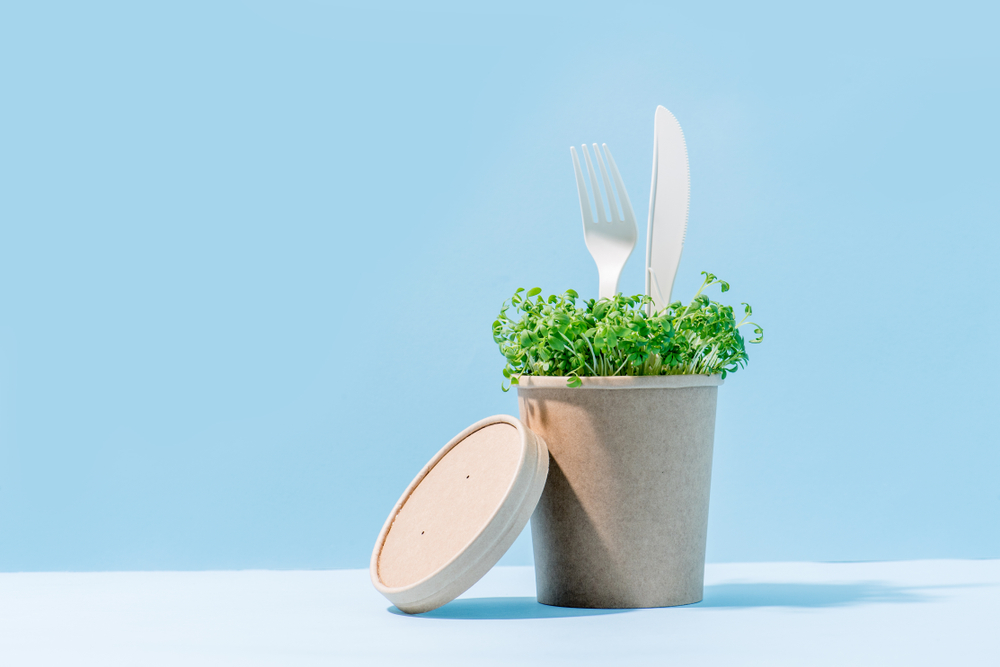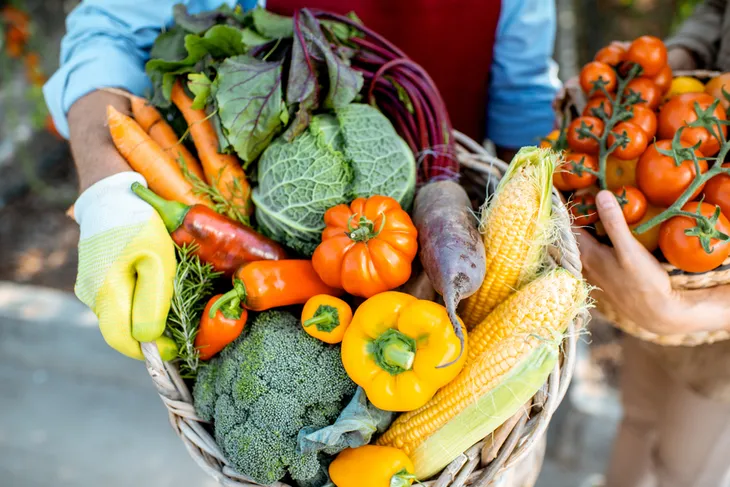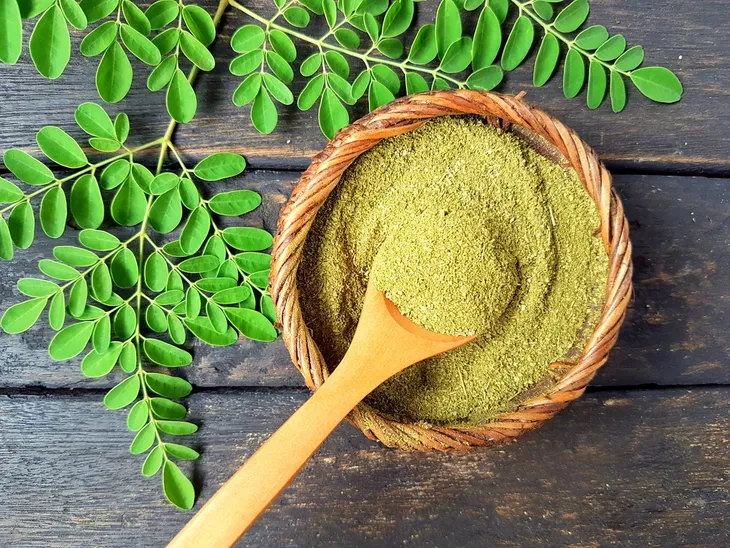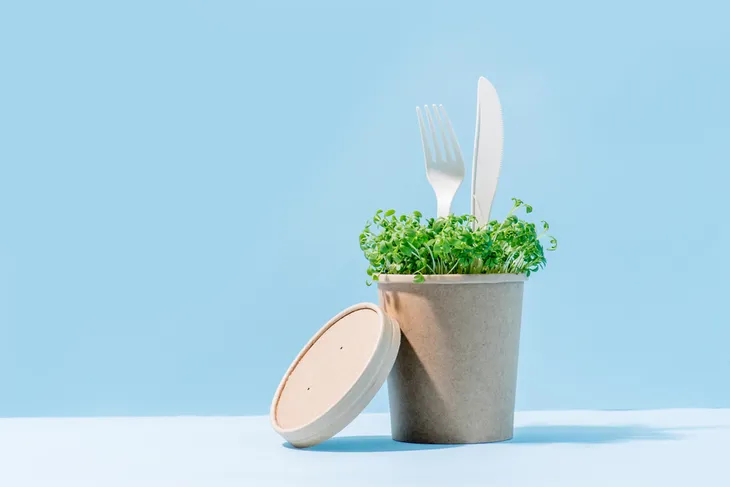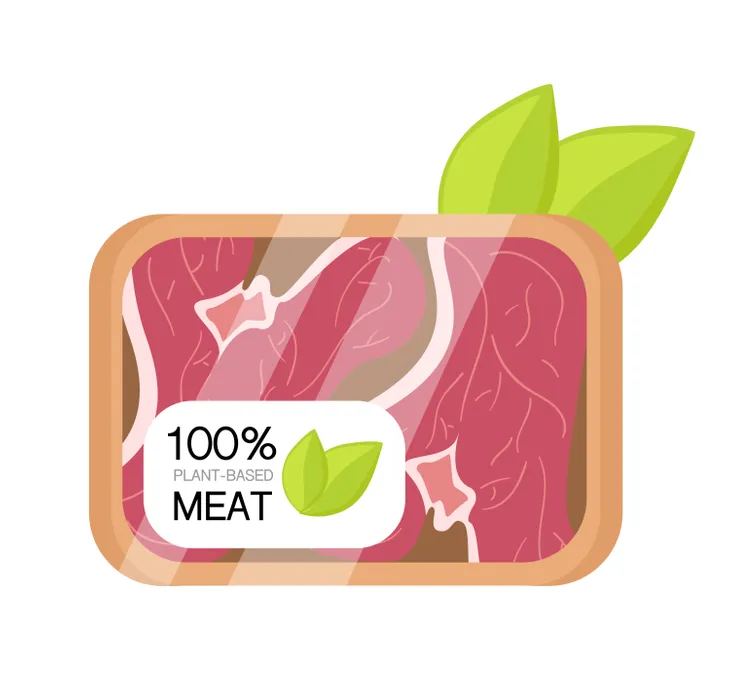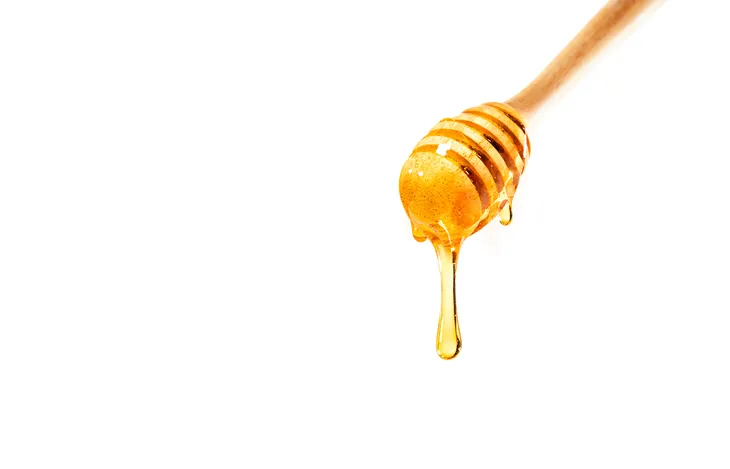It’s tough to see into the future, even if you have 2020 vision (see what we did there?) However, since the dawn of people eating food, there have been food trends that range from flavoring coffee to creating gluten-free products. As people’s tastes and food preferences change, so do the food choices and how they’re chosen and prepared.
The Huffington Post notes younger generations are becoming more health-conscious and concerned about what they’re putting in their body, as well as having more concern about the environmental impact of what they eat. With that said, here are 12 food trends you might expect to see in the coming year…
Want diet & nutrition content delivered straight to your inbox? Sign up for our exclusive diet & nutrition newsletter!
1. More Plant-Based Products
While being vegan and vegetarian are still considered being in the minority (only about 3-percent of people in the U.S. identify as vegan), there could be a growth of plant-based foods in the mainstream in 2020. In particular, you could see more alternatives in a wider range of product categories.
We’ve already seen some fast-food chains substitute meat for veggie-based versions, which apparently went over very well. But 2020 will likely see cauliflower take over as a gluten alternative more often, as well as oat milk making its way into products such as yogurt that is traditionally dairy-based.
2. Rise of Regenerative Agriculture
This emerging trend is aimed at reducing the impact farming practices have on the earth. The focus of regenerative agriculture is on enriching the quality and fertility of the land, while redirecting some of the carbon back into the soil rather than contributing to global warming.
The idea is that by focusing on the quality of the farmland, the animals that are raised on it will be healthier, and the crop yields will be more bountiful. There are a handful of companies that are already following these practices, but expect to hear this term more often in the new year.
3. More Natural Ingredients
The public’s mindset is slowly returning to the days before food was processed to last as long as possible while leading to overconsumption. While it could take some time for a shift, 2020 might mark a decline in how many additives and preservatives you read on grocery store labels, ranging from high-fructose corn syrup to sodium benzoate, some of which could carry some negative side effects according to Healthline.
As more people learn about the possible effects of chemical processing techniques, there’s a shift towards more demand for foods that are less processed and have natural ingredients. “Whole foods” is already a term in the food universe, meaning less refined and processed, and you’ll likely hear it more as food manufacturers adjust to consumer expectations.
4. Larger Range of Flours
Baking flour is traditionally made from wheat products, although some people are rejecting it because they have legitimate health problems like celiac disease that causes gluten sensitivity. Others are simply dropping gluten as a lifestyle choice.
Keep your eyes peeled at the supermarket in the coming year for new flours that use other ingredients other than wheat as the base. For example, you might see coconut or banana-based flour, as well as cauliflower-based options (doesn’t cauliflower flour have a nice ring to it?). Some experts predict that more wheat flour alternatives will be used for packaged and prepared foods.
5. Influx of West African Cuisine
You may see more dishes and ingredients coming to us from West Africa, which is made up of 16 distinct countries including Ghana and the Ivory Coast. In particular, grains that are native to the area such as millet and teff – the latter called a superfood by Men’s Journal thanks to its rich protein content – are set to make their way into more foods.
Meanwhile, moringa – a plant that grows quickly and resists drought in tropical regions – offers an abundance of nutrition that could benefit more U.S. foods. Tamarind may also become more popular thanks to its potent flavor and potential as a base for sauces and stews. West African soul food might start trending as foodies look for new flavors that are also deemed healthy.
6. Reduced Alcohol and Non-Alcoholic Beverage Choices
The rise of lower-carb diets means people are seeking out lower alcohol content in their adult beverages. Alcoholic drinks are typically high in carbs, with beer weighing in at 12-grams and fancier drinks like Piña colada tipping the scales at 32-grams, according to Healthline.
Because of this, you might notice more people drinking mocktails (all the flavor with none of the alcohol) at parties. Those who still don’t mind a bit of alcohol content will be in luck, with companies producing lower alcohol seltzers in a wider variety of flavors, as well as lighter craft beers that still pack a hoppy taste.
7. Edible Packaging
The food and beverages that are bought from grocery stores can come with a lot of flavor, but also a lot of packaging. In fact, the Environmental Protection Agency says that containers from all sources totaled about 80 million tons in 2017 alone, with more than 32 million tons ending up in the landfill.
With the shift towards producing less waste, there’s a predicted rise in the amount of edible packaging on the market. This can include edible cutlery and straws, as well as plant-based packaging that can easily be composted or re-used. Bioplastics is a buzzword that you might hear more of in 2020 as it refers to plastic that can be recycled several times or even eaten.
8. Updated Children’s Menus
At some restaurants, kids might be eating processed foods from a children’s menu while their parents indulge in organic and sustainably grown meals from the adult’s menu. But as more health-conscious millennials are having their own kids now, establishments are making a shift in what they offer their youngest patrons.
For example, you might see sushi on a kid’s menu, as well as non-wheat pastas, spring rolls, and even organic chicken nuggets. Gone might be the days when the kid’s menu is more of an afterthought to keep little ones happy while their parents indulge in the newest food offerings.
9. More Variety of Vegan Spreads
Currently you can find dairy-free butter and organic peanut butter to spread on your whole-wheat toast or bagel. However, industry insiders are saying that there’s some good news for vegans who are looking to spread their choices wider with options like chickpea butter and several others.
Meanwhile, even some of the current organic spreads can still contain palm oil, which requires heavy deforestation and loss of natural habitat. As people become more aware of this, as well as some of the questionable labor practices involved with harvesting the oil, expect a shift towards less or no palm oil used in spreads.
10. Refrigerated Snacks
With more natural ingredients and preservatives comes shorter shelf life. However, as people are not only looking for healthier meals but also healthier snacks, there’s a prediction that snacks will be more often found in the refrigerated aisles rather than on shelves.
These snacks will focus on quality and nutrition, and will include items like drinkable soups, probiotic bars, protein bites, as well as healthy snacks aimed specifically at kids. There are already quite a number of refrigerated snacks on the market, with an expectation for more in the coming year.
11. Meat/Plant Mash-Ups
While some companies are going fully vegan as alternatives to meat patties and other traditionally meat-based products, others are making a compromise. While not completely removing all animal-based ingredients, some food manufacturers are experimenting with blending plant and meat products together.
There’s a movement by a foundation dedicated to making food more sustainable to include plant-based ingredients in burgers, for example. Grocery stores are predicting they’ll see more of this blended type of product available to consumers who still love meat but want to limit their intake for moral or health reasons.
12. Alternative Sweeteners
People are moving away from refined sugars as they learn they can cause spikes in blood sugar and raise risk of diabetes, according to Livestrong. However, even by avoiding refined sugars, there are only a few natural options used often in the food industry including maple syrup and honey.
The year 2020 might see “syrupy reductions” made from coconut or pomegranates for cooking and baking, according to another prediction on upcoming food trends from Whole Foods Market. Meanwhile, the food chain also expects more starch-based syrups made from sweet potato, for example, which can be used for baking or as a drink sweetener.
